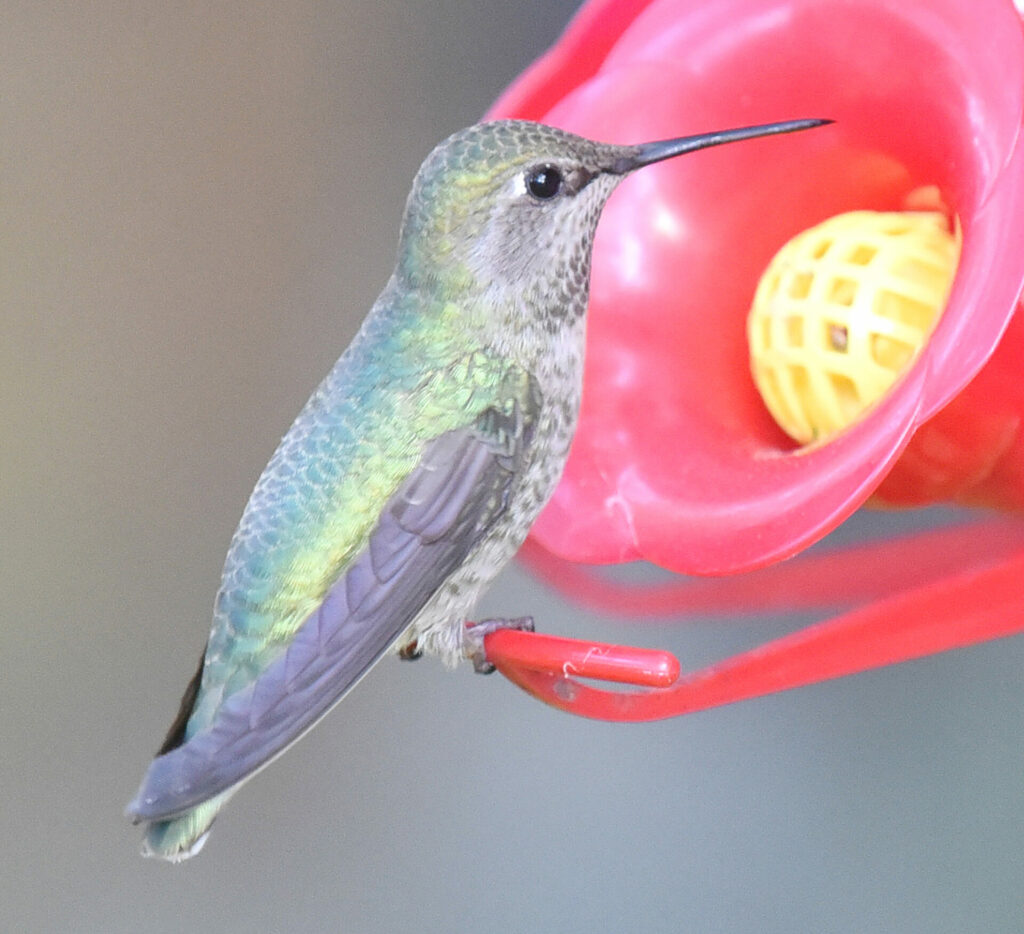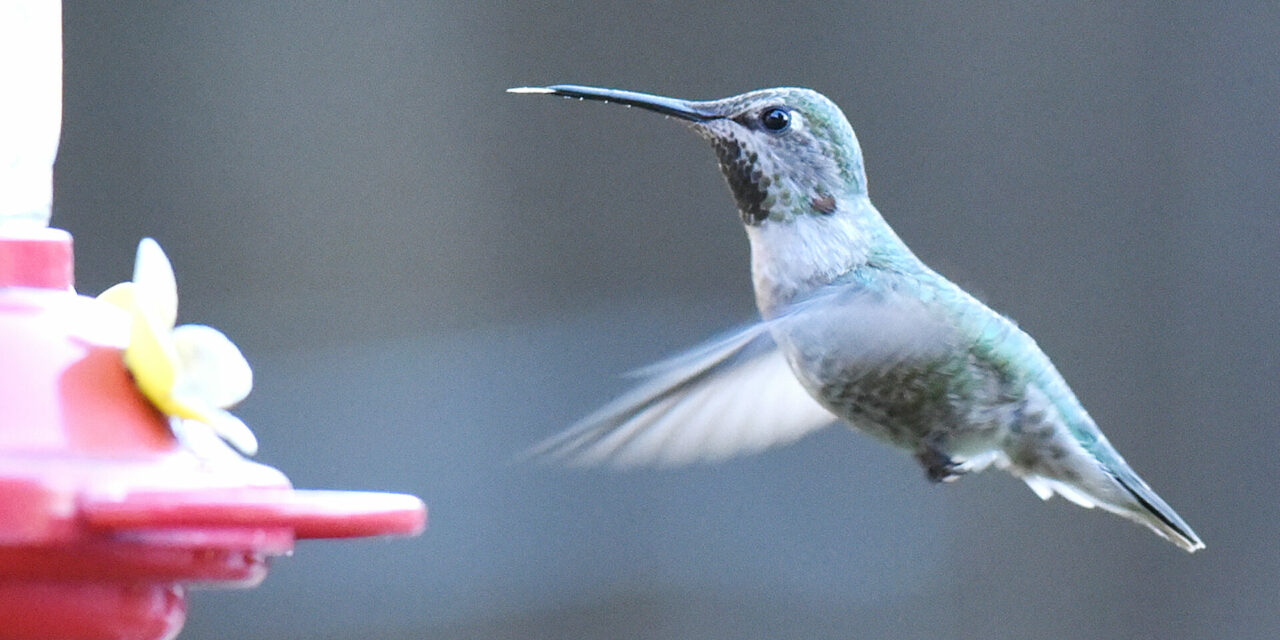Again, it is time for bird lovers to reset hummingbird feeders. Folks just beginning to experience the joy of feeding birds should know a few basic guidelines.
A novice should buy an easy-to-clean glass feeder with a simple design. There is no reason to buy an elaborate feeder except for human eye appeal.
The decision to display a hummingbird feeder comes with responsibilities. The commitment means keeping the feeder clean, changing the nectar regularly and making sure that the feeder does not become moldy. The nectar should be clear, never cloudy and checked every day during hot weather.
For beginners, smaller is better. Until feeders are attracting a number of hummingbirds, making a small amount of nectar avoids waste.
To clean a hummingbird feeder, always first dispose of any nectar left in the container. Disassemble the container. Soak the parts and wash with hot water and soap. Scrub with a clean bottle brush and rinse well. Reassemble the feeder and add fresh nectar. Never add used nectar to a cleaned feeder.
During early migration times, only a few birds may find the feeder. Even after feeding for a few days, migratory birds might fly away. Not until the nesters settle in our area is a feeder likely to draw a crowd.
Feeder placement can make a difference in attracting hummingbirds. Placing it in a highly visible place, such as a porch, will help birds find it. A shady spot gives protection from the heat.
Simple is better when it comes to a nectar formula for hummingbirds. Dissolve one-part granulated sugar in four parts water. The water may be boiled to ensure that it is sterile and to help the sugar dissolve.
Never use raw sugar, brown sugar, artificial sweeteners, honey or syrups. These might seem tasty for humans, but they are all bad for birds for numerous reasons.
Any sweetener other than plain white sugar could contain contaminants harmful to hummingbirds. For example, honey sounds good and is natural. However, honey is made by bees for bees and could have bacteria harmful to birds.

Never add red dye to hummingbird nectar. Certain red dyes can be unsafe for birds as well as for humans. Hummingbirds may be attracted to the color red, so some feeders have red in their design.
A new feeder might be placed near flowers that would naturally attract hummingbirds. Hummingbirds come to red flowers and red-based colors such as orange, lavender and pink. A gardener can feed hummingbirds naturally by planting attractive flowers.
Lantana attracts hummingbirds. Drought-resistant, it is a good choice locally. Where space allows, wisteria might grow into a huge arbor. Once established, wisteria is perennial and attracts hummingbirds with fragrant purple blooms.
Two types of hummingbirds are common in our area. The rufous hummingbird passes through early in Spring. Anna’s hummingbirds nest locally.
A rufous hummingbird is migratory, wintering in Mexico. As it travels it looks for feeders in the same spot each year. The rufous then heads north for breeding. Some fly as far as Alaska.
An Anna’s hummingbird is a stocky hummingbird with a straight bill. The male has an orange-pink throat and crown. Some will stay year-round if there is a food supply. A feeder is not their only source.
Hummingbirds are nourished by flower nectar and a few insects. They do not depend on feeder nectar. They seem to enjoy human provided nectar and sometimes seem to be making a bond. Some will fly up to a person who enjoys watching them. They will watch right back.
Hummingbirds can be delightful in local yards. Anyone up for the commitment should try their hand at attracting hummingbirds.
(Janet Miller is a freelance writer specializing in family faith. She offers Family Prayers and Activities: Weekly Guides on compact disc for families to explore the Bible together. Email jmiller@dospalos.org.)

